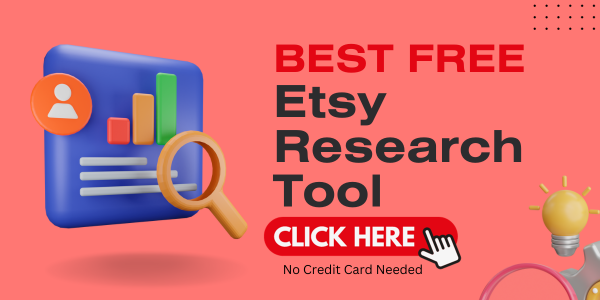Uncovering hidden keywords for Etsy SEO is crucial for the success of your Etsy shop. With Etsy keyword research, SEO strategies, and shop optimization, you can maximize your visibility and drive more traffic to your listings. But how do you find those untapped keywords that will set your shop apart from the competition? In this article, we will explore effective techniques to discover those hidden gems and take your Etsy SEO game to the next level.
Why Keywords Matter for Etsy SEO
Understanding the role of keywords in Etsy SEO
When it comes to optimizing your Etsy shop for search engines, keywords play a crucial role. Keywords are specific words or phrases that people use when searching for products on Etsy. By strategically incorporating these keywords in your shop titles, product descriptions, tags, and other relevant sections, you can improve the visibility of your shop and its products in Etsy’s search results.
Benefits of targeting the right keywords
Targeting the right keywords can bring numerous benefits to your Etsy shop. Firstly, it helps you attract highly relevant traffic to your shop. When your products appear in the search results for the keywords your potential customers are using, it increases the likelihood of them clicking on your listings. This means more visibility, more views, and ultimately, more sales.
Secondly, targeting the right keywords can help you rank higher in Etsy’s search results. When your listings align with the search terms buyers are using, Etsy’s algorithm recognizes their relevance and displays them prominently. This increase in visibility can give your shop a competitive advantage and bring you more organic traffic.
Common challenges in uncovering hidden keywords
Uncovering hidden keywords can be a challenging task, especially if you’re new to keyword research. Some sellers struggle to identify the right keywords because they may not fully understand their target audience or the language they use when searching for products. Additionally, competition for certain keywords can be fierce, making it harder to stand out in a crowded market.
However, by utilizing various keyword research techniques and tools, you can overcome these challenges and discover valuable keywords that can drive targeted traffic to your Etsy shop.
Etsy Keyword Research Techniques
Utilizing Etsy’s auto-suggest feature
One of the easiest ways to find relevant keywords for your Etsy shop is by using the platform’s auto-suggest feature. As you start typing your product or niche keywords in the search bar, Etsy automatically provides suggestions based on popular search queries. These suggestions can give you insights into the keywords buyers commonly use and help you uncover new keyword ideas.
Take advantage of this feature by experimenting with different keyword combinations and variations. Make a note of the suggested keywords that are highly relevant to your products and integrate them into your shop and listing optimization efforts.
Exploring the Etsy search results page
Another effective way to uncover keywords is by analyzing the search results page on Etsy. When you search for a specific term related to your products, observe the titles, tags, and product descriptions of the top-ranking listings. These keywords are likely to be the ones that Etsy’s algorithm associates with your niche and deems relevant to the search term.
Make a list of the common keywords you find in these top-ranking listings, as they can serve as a valuable resource for your own keyword optimization strategy. However, remember to avoid copying these keywords directly. Instead, use them as inspiration and find unique ways to incorporate them into your shop’s content.
Leveraging keyword research tools
In addition to Etsy’s native features, there are various keyword research tools available that can provide you with valuable insights. Tools like Google Keyword Planner, Ahrefs, and SEMrush can help you discover high-volume and low-competition keywords that buyers are using to search for products similar to yours.
By using these tools, you can uncover hidden keywords that you may not have considered otherwise. Look for keywords with a good balance of search volume and competition in your niche, as they offer the best opportunity for driving traffic to your shop.
Analyzing competitor listings
Your competitors can serve as a great source of inspiration for finding keywords. Analyzing their listings and identifying the keywords they are targeting can provide valuable insights into your own keyword strategy. Look for patterns in their titles, descriptions, and tags to identify common keywords they are successfully ranking for.
However, it’s important to note that blindly copying your competitors’ keywords may not yield the best results. Instead, analyze their approach and adapt it to fit your own unique selling proposition. If you offer a unique product or have a different target audience, focus on finding keywords that align with your specific niche.

Identifying Long-tail Keywords
Defining long-tail keywords and their importance
Long-tail keywords are specific keyword phrases that are more detailed and less generic than broad keywords. These phrases usually consist of three or more words and are highly targeted. While they may have lower search volume compared to broader keywords, they often have higher conversion rates because they align with specific buyer intents.
Targeting long-tail keywords is particularly important for Etsy sellers as it helps narrow down your competition and attract highly relevant traffic. By focusing on specific product attributes, variations, or niche-specific terms, you can reach buyers who are actively looking for products like yours.
Using customer feedback and reviews
Taking customer feedback and reviews into consideration can be an effective way to identify long-tail keywords. Pay attention to the words and phrases your customers use when praising your products or describing their needs and preferences. These insights can provide valuable keyword ideas that resonate with your target audience.
Additionally, analyzing customer reviews of your competitors’ products can also give you insights into the specific features or attributes buyers are looking for. By incorporating these long-tail keywords into your listings, you have a better chance of connecting with customers who are specifically seeking those attributes.
Analyzing customer search queries
Understanding the search queries buyers use to find products similar to yours is crucial for identifying long-tail keywords. Start by analyzing the search terms buyers have used when they landed on your shop or made a purchase. This can be found in your shop’s analytics or by utilizing third-party tools like Google Analytics.
Identify patterns in these search queries and note the specific words or phrases that frequently appear. These long-tail keywords can help you refine your optimization efforts and create targeted content that aligns with what buyers are searching for.
Mining keyword data from Etsy’s marketplace insights
Etsy’s marketplace insights can provide you with valuable data and trends related to keyword searches. Utilize this feature to understand which keywords are trending in your niche, as well as the search volumes associated with specific keywords.
By tailoring your shop’s content to these popular keywords, you can maximize your visibility and tap into the current demand. Pay attention to seasonal trends and other market fluctuations to ensure your shop remains relevant and optimized.
Uncovering Keywords from Etsy Tags
Understanding the significance of Etsy tags
Etsy tags are descriptive keywords or phrases that sellers can assign to their listings. These tags play a significant role in Etsy’s algorithm and help determine the relevancy of your products to buyers’ search queries. By strategically utilizing tags that align with your target audience’s language, you can improve the visibility of your listings.
Analyzing popular tags in your niche
One effective way to uncover keywords is by analyzing the tags used by successful sellers in your niche. Look for shops that are performing well and have a similar target audience to yours. By inspecting their tags, you can gain valuable insights into the keywords they are targeting.
Take note of the tags that appear frequently among successful listings and analyze their relevance to your own products. While it’s important to avoid copying these tags directly, you can take inspiration from them and find unique ways to incorporate them into your shop’s keywords.
Identifying related tags and variations
In addition to analyzing popular tags, don’t forget to brainstorm related tags and variations that are relevant to your products. Think about specific attributes, materials, colors, sizes, or themes that apply to your offerings.
By expanding your tag repertoire and including a variety of related keywords, you increase the chances of capturing different search queries. This helps your listings appear in a wider range of search results, thereby increasing your overall visibility.
Optimizing your tags for maximum visibility
When it comes to optimizing your tags, it’s important to strike a balance between relevance and popularity. While it may be enticing to use only the most high-volume tags, it’s essential to incorporate specific, niche-related tags as well. This ensures that your listings are reaching both broad audiences and those with more specific needs.
Keep in mind that Etsy allows up to 13 tags per listing. Use this space wisely by including a mix of high-volume and low-competition tags, as well as long-tail keywords that align with your target audience’s preferences. Regularly update and refine your tags based on their performance to continuously improve your shop’s visibility.

Utilizing Etsy Category Pages
Exploring category-specific keyword opportunities
Etsy has a wide range of categories, each catering to different types of products. This presents a valuable opportunity to uncover category-specific keywords that can improve your shop’s visibility within a particular niche.
Start by browsing through the category pages relevant to your products and take note of the keywords present in the titles and descriptions of top-selling listings. These keywords are likely to be the ones that resonate with buyers within that category and can help you target the right audience with your optimization efforts.
Analyzing top-selling listings in each category
Analyzing the listings that are currently performing well within each category can provide insights into the keywords that contribute to their success. Look for common keywords or phrases that appear frequently in the titles and descriptions of these listings.
By understanding the language used by successful sellers, you can create targeted content that aligns with buyer expectations within each category. However, it’s important to add your unique selling proposition to stand out among the competition and attract your own distinct customer base.
Identifying common keywords used in titles and descriptions
Titles and descriptions play a critical role in Etsy SEO, and understanding the common keywords used within them can boost your shop’s visibility. Analyze the top-ranking listings in your category and pay attention to the keywords they incorporate organically into their titles and descriptions.
By identifying these common keywords, you can align your own shop’s content with what buyers are searching for. Craft compelling product titles and descriptions that seamlessly integrate these keywords, ensuring your listings are highly relevant to potential buyers.
Leveraging External Keyword Research Tools
Overview of popular keyword research tools
While Etsy’s native features provide valuable insights, leveraging external keyword research tools can further enhance your research efforts. Various tools, such as Google Keyword Planner, Ahrefs, and SEMrush, offer in-depth data on search volume, competition, and related keywords.
Familiarize yourself with these tools and explore their features to find relevant Etsy keywords. Each tool has its unique strengths, so experiment with different platforms to generate comprehensive keyword lists that align with your shop’s niche and target audience.
Using tools to discover relevant Etsy keywords
External keyword research tools can help you understand the search demand for particular keywords and identify low-competition opportunities. Start by entering broad keywords related to your niche into the tools’ search bar and explore the suggested keyword ideas, search volumes, and competitiveness associated with each keyword.
Look for keywords that have a decent search volume while also having relatively low competition. These keywords represent a valuable opportunity to optimize your shop for specific terms, driving relevant traffic and increasing your chances of conversions.
Analyzing search volume and competition
Striking the right balance between search volume and competition is crucial when selecting keywords. High-volume keywords may bring more traffic, but they also come with increased competition, making it harder to rank higher. On the other hand, low-competition keywords may have lower search volumes, but they can provide a better chance of ranking well and attracting targeted traffic.
Analyze the search volume and competition data provided by the keyword research tools to identify the ideal keywords for your shop. Focus on long-tail keywords and specific variations that effectively target your audience, providing a better chance for visibility and conversion.
Refining keyword lists for better targeting
After gathering a comprehensive list of keywords, it’s essential to refine them based on relevance and intent. Group similar keywords together to create keyword themes, making it easier to create targeted content.
Consider the intent behind each keyword and ensure it aligns with your shop’s offerings. Remove any irrelevant keywords or those that do not resonate with your target audience. By refining your keyword lists, you ensure that your optimization efforts are focused and tailored to maximizing visibility and attracting the right customers.
Consolidating Keyword Research Data
Organizing keyword lists for easy reference
With a plethora of keywords at your disposal, keeping your research organized is key. Create spreadsheets or use keyword organization tools to categorize and store your keyword data.
Segment your keywords based on categories, themes, or specific sections of your shop. This way, you can easily refer back to your keyword lists when optimizing different aspects of your Etsy shop.
Grouping keywords based on relevance and intent
To ensure effective optimization, group your keywords based on their relevance and intent. This allows you to create targeted content and optimize different sections of your Etsy shop accordingly.
For example, if you’re selling handcrafted soaps, you might have keyword groups focused on different soap scents or ingredients. By organizing your keywords in this manner, you can tailor your titles, descriptions, and tags to meet the specific needs and preferences of your target audience.
Identifying high-potential keywords for optimization
While it’s important to have a comprehensive list of keywords, not all keywords carry the same weight in terms of driving traffic and conversions. Identify high-potential keywords that have a good balance of search volume, relevance, and competition.
These high-potential keywords should be your primary focus when optimizing your shop. By incorporating them strategically in your titles, descriptions, and tags, you increase your chances of ranking well and attracting the right audience.
Optimizing Etsy Shop with Keywords
Strategies for incorporating keywords in shop title
Your shop title is one of the most important places to incorporate relevant keywords. Make sure your shop title clearly communicates what you offer while incorporating targeted keywords that align with your niche.
Strive to strike a balance between using descriptive keywords and creating a catchy, memorable shop name. The goal is to optimize your shop’s visibility while also making a positive impression on potential customers.
Writing compelling product titles and descriptions
Product titles and descriptions provide an opportunity to further optimize your shop and individual listings. Craft product titles that include relevant keywords and accurately describe the product’s key features or attributes.
When it comes to product descriptions, focus on creating compelling, informative content that showcases the benefits and unique selling points of your products. Incorporate relevant keywords naturally throughout the description without compromising the overall quality and readability.
Optimizing tags, attributes, and sections
Tags, attributes, and sections within your Etsy shop also play a role in keyword optimization. Ensure that your tags align with your target audience’s language and the keywords you have identified through your research.
Optimize the attributes section by selecting the most relevant options related to your products. This provides additional opportunities for your shop to appear in specific searches tied to those attributes.
In the sections of your shop, such as “About” or “Policies,” include relevant keywords to enhance your shop’s overall optimization. These sections provide an opportunity to provide more information about your products and further attract potential buyers.
Enhancing SEO through image optimization
Images can greatly impact the SEO of your Etsy shop. Optimize your product images by including relevant keywords in the file names and alt text. This helps search engines understand the content of your images and can improve their visibility in search results.
Additionally, ensure that your images are of high quality and accurately showcase your products. High-quality visuals can significantly impact a buyer’s decision-making process and increase the likelihood of a purchase.
Monitoring and Adjusting Keyword Performance
Tracking keyword rankings and visibility
Once you have optimized your Etsy shop with keywords, it’s important to monitor their performance. Track how your shop ranks for specific keywords and analyze changes in visibility over time.
Utilize Etsy’s built-in analytics tools or external keyword tracking tools to keep tabs on your keyword rankings. This allows you to identify which keywords are driving the most traffic and conversions to your shop.
Analyzing conversion rates for targeted keywords
While driving traffic to your shop is important, conversions are the ultimate goal. Analyze the conversion rates for the keywords you are targeting to understand their effectiveness in attracting your target audience.
Identify the keywords that are generating the highest conversion rates and focus on optimizing further for those keywords. By continually analyzing and refining your keyword strategy, you can enhance your shop’s performance and increase sales.
Making adjustments based on performance data
Based on the performance data you gather, make adjustments to your keyword optimization strategy. Identify keywords that are underperforming and consider replacing them with new ones.
Experiment with different variations and consider incorporating new keywords that align with emerging trends or changes in buyer behavior. Continuously refining your keyword strategy ensures that your shop remains optimized and adaptable to market dynamics.
Conclusion
In conclusion, keywords play a vital role in Etsy SEO and can significantly impact the visibility and success of your shop. Targeting the right keywords through thorough research allows you to attract relevant traffic, outrank competitors, and increase conversions.
By utilizing a combination of Etsy’s native features, external keyword research tools, and analyzing competitor strategies, you can uncover valuable keywords that align with your target audience’s language and preferences.
Optimizing your Etsy shop through strategic incorporation of keywords in titles, descriptions, tags, and other sections further enhances your shop’s visibility and increases the likelihood of attracting the right customers.
Remember, keyword optimization is an ongoing process. Continuously monitor the performance of your keywords and make adjustments based on data-driven insights. By staying up to date with industry trends and regularly refining your keyword strategy, you can maintain a competitive edge in the Etsy marketplace.



